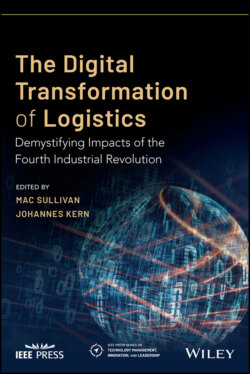Читать книгу The Digital Transformation of Logistics - Группа авторов - Страница 22
Technology Is Easy; But People Are Hard
ОглавлениеWith $1.5 trillion being spent every year on logistics, new entrants are quickly entering the market, and incumbents are frantically trying to solidify their position (Gould 2018). As a critical control mechanism of global supply chain activities, global logistics service providers, of which freight forwarding companies are part of, are facing a new set of requirements from supplier and customers, and they are having to adjust their organizational competencies and align processes (Chen et al. 2019). Societal adoption of technology has traditionally varied even when the talent and infrastructure have been in place, and researchers propose that there are typically social impediments to technology transplantation (Mokyr 1996).
Technological adoption in large logistics companies has been slow as top‐line demands, corporate bureaucracy, large geographic presence, and a lack of innovation culture stifle even the most well‐resourced technological investments. Senior executives from top 20 logistics company have stated, “Digital platforms are just for the next generation”, “Temporary labor automated process flows would never work in a country like China” and “Blockchain is a topic from 10 years ago” (Bao et al. 2018). Changing perceptions and stances on the impacts of potentially pervasive technology takes time and is often a seismic event to put things into perspective as shown by recent events during the outbreak of COVID‐19.
